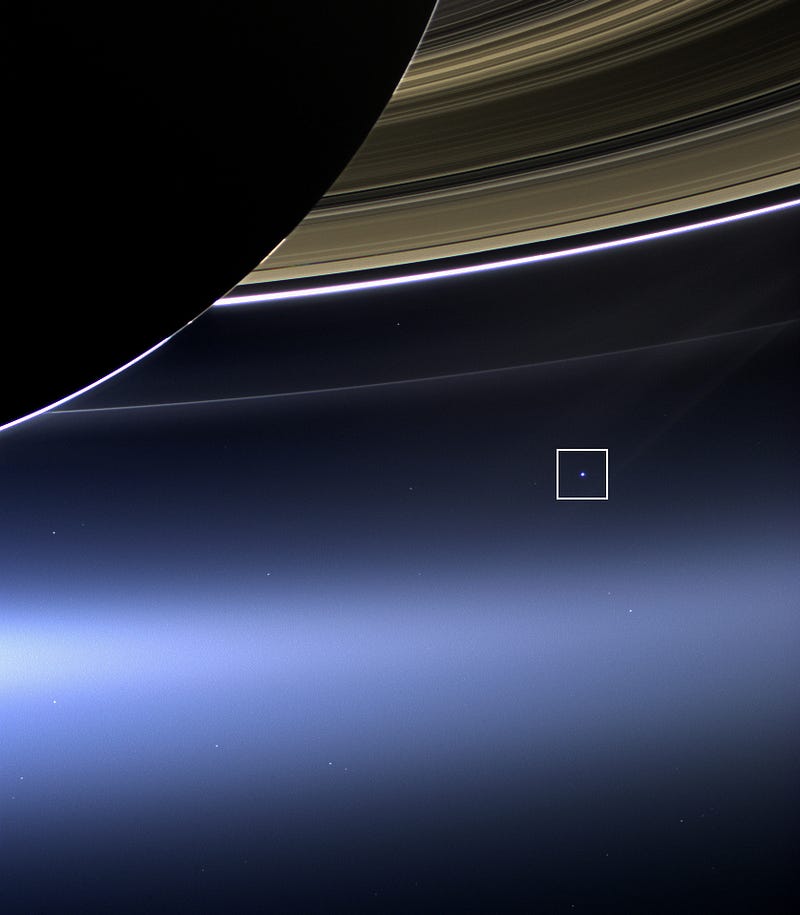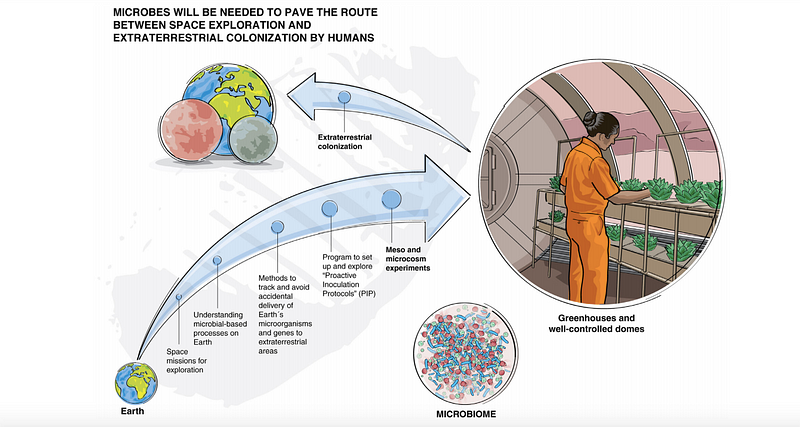The Case for Microbial Terraforming on Mars: A New Frontier
Written on
Chapter 1: Understanding the Cassini Mission
The stunning images captured by the Cassini spacecraft during its tenure orbiting Saturn have provided humanity with unparalleled glimpses of the cosmos. Among its achievements, it documented the planet's majestic storms and the moons that gracefully revolve around it. One particularly poignant photo reveals Earth from the dark side of Saturn—a tiny, milky speck in the vastness of space, almost lost among the stars. Over the course of nearly 300 orbits, Cassini managed to take over 400,000 breathtaking images. However, a significant discovery led to its deliberate demise.

Instead of continuing its mission in orbit, NASA chose to send Cassini into Saturn's harsh atmosphere, where it would ultimately disintegrate. What prompted this drastic decision?
Section 1.1: The Discovery of Enceladus
Cassini uncovered the intriguing moon Enceladus, which is one of Saturn's 53 recognized satellites. The spacecraft revealed that beneath its icy exterior lies a vast ocean of saltwater, complete with erupting plumes. Enceladus contains nearly all the essential chemical elements for life, and its hydrothermal vents are believed to enrich its ocean with a diverse array of minerals—conditions reminiscent of those that may have sparked life on Earth. Had Cassini remained in orbit, its potential crash landing on Enceladus could have contaminated the moon with Earth microbes, jeopardizing our ability to determine if life ever existed there.
Spacecraft are subjected to rigorous sterilization processes, but it is nearly impossible to eradicate every microorganism before launch. Bacteria and fungi continue to thrive aboard the International Space Station, and resilient tardigrades can survive even the harshest conditions of space. Although rovers sent to Mars undergo thorough cleaning, it is likely that some microbes have made the journey to the Martian surface. An international agreement mandates that spacecraft be sterilized to the best of our abilities to prevent contamination of new celestial bodies.
Section 1.2: A Shift in Perspective
As humanity advances, we may soon face a pivotal moment where this sterilization principle becomes less critical.

Recent discussions suggest that we should intentionally introduce Earth microbes to Mars. According to a paper published in the FEMS Microbiology Ecology journal, NASA and private companies like SpaceX are preparing to send humans to Mars in the next decade. The ambition to transform Mars into a second home is fueled by various motivations—providing a backup for humanity, becoming a two-planet species, or furthering civilization's expansion. Most envision a Mars that feels familiar, rather than confined to domes and spacesuits.
Once we decide to inhabit Mars, the initial colonizers should ideally be microbes rather than humans. This would not be an act of contamination but rather a strategic introduction of beneficial organisms. Cyanobacteria, for example, played a crucial role in making Earth habitable by converting carbon dioxide into oxygen. Along with fungi, algae, and protozoans, these organisms have been essential in forming the environment we enjoy today. The hope is that they could replicate this success on Mars, creating a viable food chain and sustainable agricultural practices.

However, for these microorganisms to thrive, they must first endure the numerous challenges of space travel and the harsh conditions upon arrival.
Chapter 2: The Risks and Rewards of Microbial Introduction
The idea of introducing microbes to Mars is daunting, particularly given our awareness of the dangers posed by microorganisms. The unknowns of how these organisms might evolve in an extraterrestrial environment are significant. Gene transfers lead to evolutionary changes, but predicting when or how this might occur remains unpredictable. Therefore, scientists stress the importance of thoroughly studying these organisms before sending them into the cosmos. With an estimated one trillion microbial species on Earth, this task demands substantial investment and effort.
The funds currently allocated for sterilization could be more effectively used to differentiate between beneficial and harmful microbes. By eliminating only the harmful strains, projects could save millions—sterilization costs can reach as high as $300 million for individual missions.
Moreover, technology is advancing to allow for tracking and monitoring these organisms post-introduction. Observing how they adapt to increased radiation, low oxygen levels, and extreme temperatures will be fascinating. If they manage to survive these challenges, how will they change?
The first video titled "Why Humans Will Never Colonize Mars with Gizmodo's George Dvorsky" explores the complexities and challenges of human colonization of Mars, emphasizing the role of microbes in potential terraforming.
The second video, "Mars is NOT the Best Choice! For Humanity's First Space Colony!" argues against Mars as the ideal location for human colonization, highlighting the need for a more strategic approach.
In theory, advances in technology will allow us to distinguish between Earth and Martian life forms, even if they mix. Techniques like DNA sequencing and gene manipulation provide insights into life's fundamental structure. The study suggests that the likelihood of confusing Earth life with Martian organisms is minimal. Additionally, with Martian soil having been delivered to Earth in the form of meteorites, and vice versa, cross-contamination is already a natural occurrence, which raises questions about the effectiveness of sterilization protocols.
Yet, the introduction of Earth microbes carries inherent risks. Despite our monitoring efforts, these organisms will never be entirely under our control.

As we prepare for human missions to Mars, we must consider the implications of our microbiomes. Unlike equipment, humans cannot be sterilized. Colonists will arrive with their food and tools for survival, inevitably leading to interactions between Earth life and the Martian environment.
The moment we step onto Mars will mark a significant meeting of Earth and Martian life. If native organisms exist, this could lead to dramatic interactions. However, the right microbes could pave the way for a transformation of Mars into a welcoming home.
The potential is there; all that is needed is the opportunity to move forward.